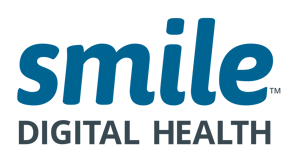March 21, 2022
NSA Series: Part 2 of 9
Advanced Explanation of Benefits (EOB)
An explanation from the Payer to the patient about what portion of scheduled services will be covered by the health plan and what portion must be paid for out-of-pocket. It must include information about the facility’s or provider’s network status and the contracted fee for the item or service, based on the billing and diagnostic codes sent by the provider. An advanced EOB is triggered by the provider sending a Good Faith Estimate to the plan and must be provided to patients before scheduled care or upon patient request before scheduling.
Affordable Care Act (ACA)
A comprehensive reform law enacted in 2010 that increases health insurance coverage for the uninsured and implements reforms to the health insurance market.
Ancillary services
- Services related to emergency medicine, anesthesiology, pathology, radiology and neonatology,
- Items and services provided by assistant surgeons, hospitalists and intensivists
- Diagnostic services such as radiology and laboratory services, and
- Items and services provided by certain specialty practitioners.
Balance billing
A surprise bill from an out-of-network provider when a patient’s health plan does not cover the entire out-of-network cost.
Consolidated Appropriations Act
One of the largest spending measures ever enacted and the longest bill ever passed by Congress. Amongst its many provisions, it includes a ban on most surprise medical billing, which applies to physicians, hospitals and air ambulances. It requires out-of-network providers to negotiate with insurers to obtain compensation, rather than billing insured patients directly.
Cost Comparison Tool
An online price comparison tool that allows enrollees to compare expected out-of-pocket costs for items and services across multiple providers within a specific geographic region for that plan year.
Cost-sharing
Out-of-pocket costs such as deductibles, coinsurance, copayments, or similar charges, but typically doesn't include balance billing amounts for out-of-network providers.
Employee Retirement Income Security Act (ERISA)
A federal law that sets minimum standards for most voluntarily established retirement and health plans in private industry.
Good Faith Estimate (GFE)
A well-educated cost approximation provided by the healthcare provider to patient of the health insurance plan of service charges.
Emergency Services
Includes care provided at an independent, freestanding ED and pre-stabilization services provided after the patient is moved out of the emergency department (ED) and admitted to a hospital.
Final-offer arbitration
A process to determine how much insurers must pay out-of-network providers if they are dissatisfied with a health plan’s payment.
In-network (INN) provider
A healthcare provider that has a contract with a patient’s insurance plan to provide services at a contracted rate.
Independent Dispute Resolution (IDR)
The process for resolving rate disputes between health plans and out-of-network healthcare facilities and providers if the out-of-network facility or out-of-network provider and health plan fail to agree on the payment amount during the 30-day open negotiation period.
Initial payment
Health plans must make a payment to the provider of an unspecified amount within 30 days of the date the service or transmit a notice of denial.
Non-emergency services
Elective health services of a non-emergent nature (e.g. scheduled surgery).
Out-of-network (OON) provider
A healthcare provider who does not have a contract or pre-negotiated rates with a patient's health insurance plan.
Participant/beneficiary
Patient.
Payer or Payor
Health insurance plan.
Provider
Healthcare clinician or facility (hospital, clinic, etc.).
Provider Directory
A database of in-network providers including provider and facility contact information, specialty information, direct or indirect contractual relationship with the plan and digital contact information.
Provider organization networks (PPO)
A list of the doctors, other health care providers, and hospitals that a plan contracts with to provide medical care to its members (also called “network providers” or “in-network providers”).
Qualifying Payment Amount
The basis for calculating the patient's share of the bill.
Read our series of blogs below to continue learning about NSA.
Part 1: Implications of NSA
Part 2: NSA Glossary of Terms
Part 3: Understanding Key Provisions
Part 4: An Honest Assessment for Providers of NSA Implementation


